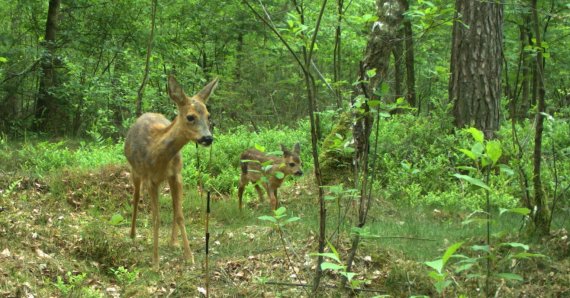(Photos: Tim Hofmeester)
Every year in the Netherlands about 25,000 people are infected with Borrelia burgdorferi, a complex of bacteria which cause Lyme’s disease and is transmitted by ticks. Hofmeester looked for the weakest link in the life cycle of the tick, in the hope that this would reveal starting points for combatting the disease.
But it proves impossible to locate that weakest link, thanks to the insect’s complicated life cycle. The tick starts out life as a larva, turns into a nymph and ends up as an egg-laying adult. The tick needs one feed of blood at every stage. It is during that feed that infection takes place. And that is where the difficulty starts: the larva, the nymph and the adult tick all feed off different hosts. Larvae mainly feed on mice and other small mammals, nymphs forage on birds such as the songthrush and the blackbird, while deer are the adult’s ticks main hosts.
A tick-infested wood mouse.
Hofmeester set up camera traps in several different tracts of forest to find out which animals – hosts – passed by. He used a cloth tick drag to count tick populations and he caught mice to find out how many ticks they were carrying around. His results show that tick numbers depend on deer numbers. ‘In areas with no deer there are hardly any ticks. But more deer does not automatically mean more ticks.’ The infection rate also depends heavily on the number of ticks per mouse. ‘The more ticks a mouse has, the bigger the chances that the mouse contracts Lyme’s disease, and therefore also that the larvae which feed on the mice are infected.’
These results have not produced a ‘smoking gun’, says Hofmeester. ‘If you study just one animal species, you don’t know what happens to the population density of another, or whether that makes the incidence of Lyme go up or down. Hofmeester’s advice is therefore to focus not on controlling animal populations but on providing people with accurate information.

